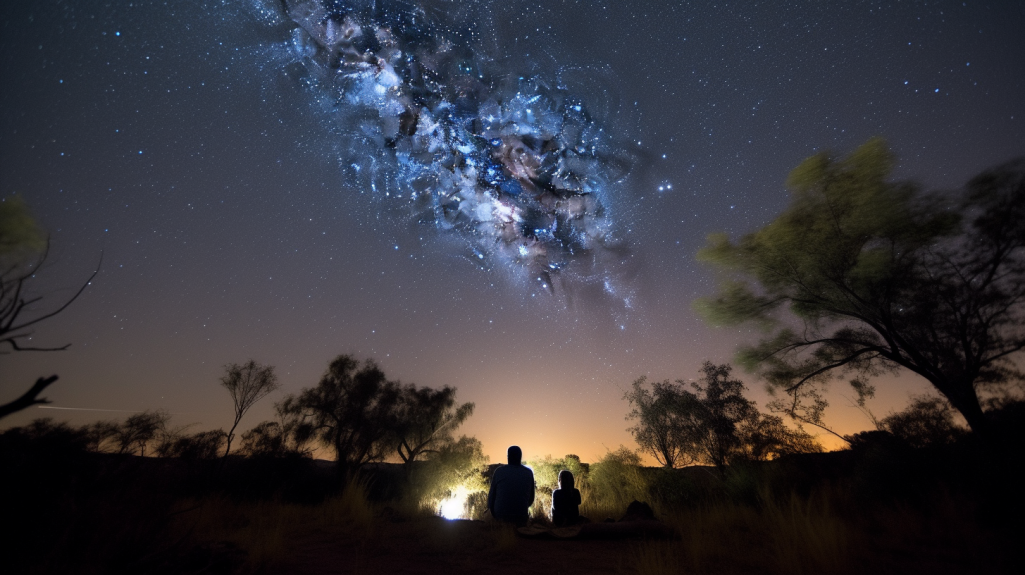In a world where city lights obscure the brilliance of the night sky, finding a place where the stars still shine brightly has become a rare treasure. For avid stargazers and astronomy enthusiasts, the quest for the perfect celestial spectacle often leads to remote corners of the Earth where light pollution is but a myth. In this ethereal pursuit of cosmic wonders, there exist sanctuaries where the night sky unveils its truest splendor. Join us as we embark on a journey through the world’s darkest skies, exploring the spectral serenity of stargazing that awaits those who seek it.
Chasing Darkness: The Battle Against Light Pollution
Light pollution, the bane of astronomers, robs us of the mesmerizing nightscapes our ancestors once marveled at. Artificial lights not only dim the stars but also affect nocturnal wildlife and human health. However, in certain remote regions, efforts have been made to preserve the sanctity of the night sky. International Dark Sky Reserves and Parks have emerged as beacons of hope, where stringent lighting regulations and public awareness campaigns are preserving the natural darkness for future generations to witness.
The Milky Way’s Dance: A Symphony of Stars
Away from the urban glow, the Milky Way, our home galaxy, graces the heavens in all its glory. Imagine standing beneath a canopy of stars, with the Milky Way stretching across the firmament like a river of light. In places like the Aoraki Mackenzie International Dark Sky Reserve in New Zealand, the Milky Way becomes a tangible presence, weaving its way through constellations and nebulae, captivating the soul with its cosmic dance.
Meteor Showers and Celestial Phenomena
Dark skies offer front-row seats to some of nature’s most spectacular events. Meteor showers, like the Perseids and Geminids, paint the night with streaks of light as Earth traverses the debris left by comets. Witnessing a meteor shower in a place untouched by light pollution is a transcendental experience, connecting us to the universe in an intimate way. Moreover, the dance of the Northern and Southern Lights, the auroras, is amplified in the absence of light pollution, transforming the night into a canvas of vibrant colors that defy imagination.
Telescopic Treasures: Planets, Nebulae, and Galaxies
Stargazing in the world’s darkest skies is not just about admiring the vastness of space; it’s about exploring its intricacies. With telescopes, celestial enthusiasts can observe planets like Jupiter with its moons and Saturn with its stunning rings in remarkable detail. Nebulae, birthplaces of stars, reveal their delicate, colorful tendrils, while distant galaxies millions of light-years away beckon our gaze, reminding us of the vastness of the cosmos.
The Spiritual Connection: Stargazing and Human Consciousness
Beyond the scientific wonders, stargazing holds a profound spiritual significance for many. Cultures across the globe have woven celestial bodies into their myths, religions, and philosophies. The uninterrupted view of the night sky allows for introspection and contemplation, inviting us to ponder our place in the universe. It’s in these moments of spectral serenity that we often find solace, inspiration, and a deep sense of connection to something greater than ourselves.
Conclusion
In the world’s darkest skies, where stars twinkle with unparalleled brilliance, stargazing transcends the realms of hobby or scientific pursuit; it becomes a transformative experience. It’s a journey back to our roots, reminding us of the vast cosmos we are an integral part of. As we gaze upward, we’re not just observing distant stars and galaxies; we’re reconnecting with the ancient wisdom of our ancestors, contemplating the mysteries of the universe, and embracing the spectral serenity that envelops us beneath the pristine night sky. So, let us venture forth, far from the city lights, and revel in the cosmic splendor that awaits us in the world’s darkest skies.

